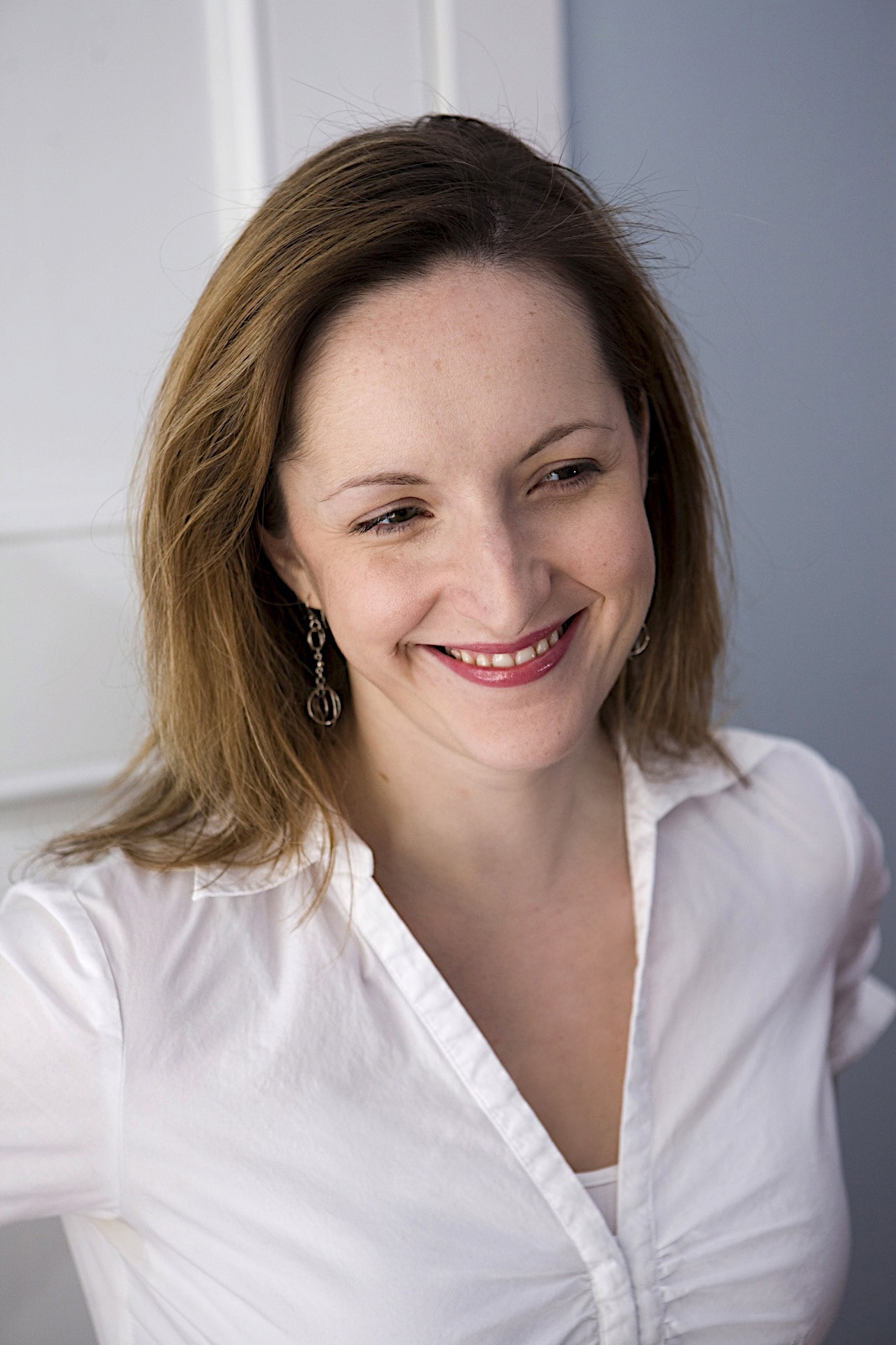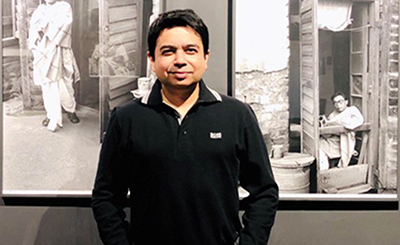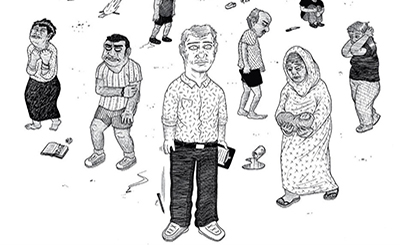
Chicago-based author Rebecca Makkai. Photo: Ryan Fowler
Rebecca Makkai, finalist for the 2019 Pulitzer Prize for Fiction, says writing her third novel, The Great Believers, was an instant act of catharsis, a way to channel grief and frustration into art
For American novelist and short-story writer Rebecca Makkai, 41, whose latest novel, The Great Believers (Viking, 2018), was a finalist for the 2019 Pulitzer Prize in Fiction, her first novel, her first novel, The Borrower (Viking, 2011), made her an “outliner”. The novel is the story of Lucy Hull, a young children’s librarian in Hannibal, Missouri, who embarks on a crazy road trip with her favourite patron, 10-year-old Ian Drake. Her patron needs Lucy’s help to smuggle books past his overbearing mother, who has enrolled him in weekly anti-gay classes. When he runs away from home, Lucy is desperate to save him from his parents and allows herself to be hijacked by the boy. For the novel, Makkai didn’t outline, and it took her ten years to write it. Her second novel, The Hundred-Year House (2014) — an inter-generational mystery and a story about the secrets of an old-money family and their turn-of-the-century Midwestern estate, Laurelfield — made her think very hard about the “intricacies of cause and effect”.
The Great Believers, Makkai says in an email interview, taught her how to write character much more closely and compassionately than she’d done before. The novel, which alternates between two parallel narratives of a mother’s search for her estranged daughter in Paris and a group of friends in Chicago during the AIDS crisis, was shortlisted for the National Book Award. The New York Times rated it one of the 10 best books of 2018. It has already been translated into about seven odd languages.
Makkai, a faculty member in Northwestern’s School of Professional Studies in Chicago, teaches in the Prose and Poetry MFA and the Writing master’s programmes. Writing The Great Believers, she says, was an instant act of catharsis, a way to channel grief and frustration into art. “Art, if you’re lucky, isn’t pain; it’s the release of pain,” she says. Excerpts from an interview:
Shireen Quadri: The Great Believers is a poignant mediation on AIDS, loss, and friendship. The novel, about the epidemic and a trail of absences in its wake, is imbued with tragedy and trauma. How was the process of writing this heartbreaking novel?
Rebecca Makkai: The many interviews I conducted with survivors were painful, but mercifully, writing was not. Writing was an instant act of catharsis, a way to channel grief and frustration into art. I was working on the book from 2014 to 2017, which was, of course, a very difficult time in America (as every year since then has been), and escaping into parallel traumas of the past was helpful and educational and cathartic. Art, if you’re lucky, isn’t pain; it’s the release of pain.
Shireen Quadri: The novel tells the story, in alternating chapters, about a group of friends, mostly gay men, in Chicago’s Boystown neighbourhood in the mid-to-late 1980s, and Fiona, in 2015 who lands in Paris in search of her estranged daughter, Claire. How important was the interplay between past and the present for the story? How did you go about weaving the two seemingly disparate narratives into a seamless whole?
Rebecca Makkai: I started out focusing only on the 1980s, and it was only after I’d written about a hundred pages focused on Yale that I realised I needed to address the decades-long echoes of the virus. This was still very early in the drafting process, and I had lots of time to reimagine the way two threads might weave together. Fiona’s sections were quickly caught up to Yale’s, and from then on I wrote the two storylines in tandem. It’s a book in which a lot of the early mystery revolves around how these two threads are going to come together. Readers who expect every connection explained up front are going to get impatient with the setup, but I personally love the satisfaction of figuring out late in the game how things will come together. A couple of my favourite novels that do this well are Nicole Krauss’s The History of Love (2005) and Ru Freeman’s A Disobedient Girl (2009).
Shireen Quadri: It is interesting to observe your attention to time, and the various ways memory works (and, in many ways, shapes us), in the novel. The “time travel of memory”, some reviewers have pointed out, is a constant motif in the novel, with memory serving as a testament to loss. Were you interested in exploring the mechanics of memory in the novel?
Rebecca Makkai: One theme I’m always interested in, no matter what I’m writing, is time. My second novel, The Hundred-Year House, was told backwards; The Great Believers is indeed very much a novel about memory; my work-in-progress, a new novel, is about trying to remember the details of an event that happened twenty-five years in the past. As I mentioned, I didn’t start The Great Believers knowing I would set part of it closer to the present day — but as I interviewed more and more survivors, I became fascinated by the long arm of grief, and by the way the past thirty years have strengthened or obscured the memories of those we lost.
Shireen Quadri: While the novel is rife with loss, it also involves the memory keepers, who have to bear the burden of so many lives cut short in their prime, taking with them the regret of songs unwritten, movies unmade, books unread or houses unowned. How vital is Fiona Marcus to the narrative as a thread that ties the story of those gone with the one of those left behind?’
Rebecca Makkai: She’s absolutely vital, and yet she’s also fundamentally a secondary character. Her sections are far shorter than Yale’s, and her plot is much thinner. That’s intentional, of course; there was no way I was going to try to give her a modern-day arc that would compete in some way with his. But she’s necessary, for registering the echoes of grief. This wouldn’t have worked as a novel that ended in the midst of crisis. It’s fundamentally a book about aftermath. And yes, it did become important to me to write about the caretakers who sacrificed so much of their own lives. So many of them, gay or straight, were women —and we tend to take female emotional sacrifice wildly for granted.
Shireen Quadri: Talking of characters, how crucial to the plot is Nora Marcus Lerner, Fiona’s aunt, who is in possession of a number of pieces of modern art, most dating from the early 1920s — including paintings, sketches, and line drawings by Modigliani, Soutine, Pascin, and Foujita — and offers them to Yale Tishman, a gay man in his early 30s, in Chicago during the AIDS crisis, to find a home for these works — Northwestern’s budding art gallery?
Rebecca Makkai: Nora was originally (in my earliest ideas) going to be the focus of the book, and this is something I’ve spoken a great deal about in other interviews and essays. The short version is that while I quickly realised the heart of the book lay in the 1980s AIDS crisis, I wanted to keep her around in part because of her connection to another generation’s trauma, another generation’s loss and aftermath and memory. She’s crucial not just for symbolic reasons, though, but for the plot itself. It was crucial to me that Yale had something going on besides the AIDS crisis, something going well in his life and career. And in fact that’s true to life: Work and life and the world went on, at the same time that people’s lives were falling apart.
Shireen Quadri: While Nora knew the famous artists from the 1920s, she chooses to dwell on the one who slipped through the cracks of formal history, consigned to oblivion. Was this focus on the unsung important for you as a novelist and an admirer of art?
Rebecca Makkai: Partly, yes — but before I arrived at a thematic understanding of Ranko Novak, he needed to exist for me just as a character. There’s something funny in the way we look at arts history, both in fiction and nonfiction, where we only focus on the ones who made it. We look back and everyone was a Picasso, everyone was a Monet. What about the artists who seemed completely promising at the time, who were central to the arts scene, whose names we just don’t remember? Not necessarily because something happened to them, but because they just didn’t quite make it into the canon? In my early drafts, I had only famous artists—Modigliani, Soutine, Foujita, etc.—and it didn’t feel honest. Where were the almost-geniuses? Where were the geniuses time forgot? I introduced Ranko for that reason, and then quickly realised what he meant to the book, as someone who might have been great, if not for the vicissitudes of history.
Shireen Quadri: The novel also dwells on the thin line between allyship and appropriation. How do you see this unfold in the contemporary art scene in America? How must art help secure and preserve for posterity legacies on the verge of being lost?
Rebecca Makkai: This consideration weighed heavily on my mind as I wrote, as it very much should have. This was not a project to undertake with any kind of hubris. I needed to go in with complete humility and the assumption that I had years of research ahead of me.
The question of art preserving legacy is a completely different one from the question of who stories belong to, and both are tremendously complicated subjects. But, yes, of course, storytelling is and always has been how history is best passed down. We need the individual in addition to the general, even in nonfiction (we need, for instance, Anne Frank) and there are times when carefully researched fiction can pass down the essence of a time better than volumes of nonfiction that would struggle to find an audience.
We’re working to turn The Great Believers into a television series, and I’m thrilled to think we could bring the story of that time to a wider audience. It’s been amazing to me, being out on the road with this story, how little some people knew about the epidemic before they picked up my book. These aren’t typically people who would rush to pick up a nonfiction account of AIDS in America, but if their book club picks my novel, they’re going to learn about it along the way. And then, I hope, they’ll read more — nonfiction, direct accounts, art from the time, work by survivors. Nothing has made me happier than people telling me that after my book they’ve gone back to the library to learn more.
Shireen Quadri: Your empathetic novel also contains “a sense of continuance through the stories we tell”, as some reviewers have rightly noted. Do you see your characters in the novel living in a continuum, learning from the losses and the lessons of the past to come to terms with the harsh realities of the present?
Rebecca Makkai: In the 1980s, Yale is looking back on the 1920s (through Nora’s stories), and he does take some comfort in hearing about a time similar to his own. Fiona, in 2015, is not looking back on the 80s in the same way; rather, she has pushed the trauma of that time very far down, and is just now forced to come to terms with the mistakes she’s made and the way her life has been marred by grief. I wouldn’t say that Fiona is using the past to come to terms with the present; first she needs to come to terms with the past.
Shireen Quadri: In its consideration of the past, the novel unfolds the lives of groups who view themselves — or are largely perceived as — “outsiders” and “protesters”. The story, in a sense, is the story of the lives of “others” as it focuses on what we learn from the problems of those distinct from ourselves — a group of young men. How do you look at identity and “otherness” in the America of today?
Rebecca Makkai: Largely in the same way. People in power are always going to let horrible things befall the disenfranchised because they can get away with it. We still have 1.1 million Americans living with HIV (and around 35 million globally!), and in many of those cases it is not under control, not medicated and treated. I believe that originally, the dismissal of those with AIDS in America was mostly homophobia, with a bit of racism. Now it seems that ratio has inverted; the government and media and citizens ignoring this epidemic are primarily motivated by racist dismissal (new cases afflict mostly black and brown populations in southern cities like Atlanta and Washington DC) with, of course, some homophobia too.
Shireen Quadri: “We were the great believers…. have never cared for any men as much as for these who felt the first springs when I did, and saw death ahead, and were reprieved — and who now walk the long stormy summer.” In the epigraph, you quote this line from an essay — My Generation — by F Scott Fitzgerald. Tell us about your appreciation of his works and whether this novel owes anything to him?
Rebecca Makkai: No, this book doesn’t owe anything in particular to him, other than the title and that quote. I’ve always adored some of his work (The Great Gatsby, 1925) and been exasperated by some of it (Tender is the Night, 1934) and generally found him a master of sentence-level craftsmanship whose structure, when it succeeded, owed almost everything to the work of his editor, Maxwell Perkins. He was tremendously of his moment, more than almost any other author I can think of belonging to any other moment, and he’s had a lot of influence on the way most of us think about the 1920s in America and Europe. But I was trying to get beyond that romanticising in this book, and for that reason in my research I was more drawn to nonfiction accounts of the time than to fictionalisations — his or anyone else’s.
Shireen Quadri: Your two other novels — The Borrower and The Hundred-Year House — and a collection of short stories, Music for Wartime (Viking, 2015), stood out for their sterling prose. While working on a particular story or a novel, what is your overriding concern — do you think about their themes, fret over their form or keep your focus on a good story told well? Tell us about how each of your book has helped you hone your craft?
Rebecca Makkai: I mean, I’m likely to be working on a book for five years at least, so yes, all of those things. There are plenty of people who are only concerned with one or the other; those people are not getting published.
In brief, I’ll say that my first novel made me an outliner (because I didn’t outline, and it took me ten years); my second novel made me think very hard about the intricacies of cause and effect; and The Great Believers taught me how to write character much more closely and compassionately than I’d done before.
Shireen Quadri: Do you see yourself writing for your generation? Who are some of the contemporary American novelists and short story writers you look up to?
Rebecca Makkai: I don’t think too much about generation, perhaps because I try not to think too much about readers; my commitment is to the story itself. Some of the many American writers I’ll champion at every opportunity, in part because they aren’t appreciated commensurately with their talents, are Julie Otsuka (whose two novels are like nothing else being done today), Nick Flynn (one of the finest and strangest memoirists we have), Rabih Alameddine (an absolute genius) and Abby Geni (a largely undiscovered treasure). Leaving American behind, I’m particularly in awe of two British writers working at the top of their game: Tessa Hadley, the modern incarnation of Virginia Woolf; and Ali Smith, who is sui generis and both for this moment and the future.
More from The Byword
Comments
*Comments will be moderated











